Title : Emergence and genomic characterization of high-risk Pseudomonas aeruginosa clones in Morocco: A one health perspective on antimicrobial resistance
Abstract:
Background: Pseudomonas aeruginosa is an opportunistic pathogen widely recognized for its genomic plasticity and multidrug resistance. Understanding its dissemination across human and environmental interfaces is crucial to combat antimicrobial resistance (AMR).
Objective: To characterize the antimicrobial resistance, virulence, and genomic diversity of P. aeruginosa isolates from hospital, community, and environmental sources in Morocco under a One Health approach.
Methods: A total of 191 isolates were collected in the Casablanca region, including hospital (n=46), community (n=88), and environmental samples (n=57) from surface waters. Identification was performed using MALDI-TOF and VITEK® systems, and antibiotic susceptibility testing followed EUCAST 2021 guidelines. Twenty-eight isolates representing diverse resistance profiles underwent in-depth analyses, including detection of metallo-βlactamases. Whole-genome sequencing (Illumina platform) was conducted to characterize the resistome, virulome, and mobilome, and to determine sequence types (STs) and phylogenetic relationships among isolates from different origins.
Results: Hospital and community isolates showed high multidrug and extensively drugresistant (XDR) rates, while environmental isolates exhibited lower resistance but retained significant virulence potential. Two isolates resistant to cefiderocol were identified for the first time in Morocco. Genomic analyses revealed co-occurrence of blaVIM-2-blaNDM-1 and blaVIM-2blaIMP-8 genes, and the circulation of high-risk clones ST308, ST773, and ST233 across hospital and community settings. Environmental isolates shared phylogenetic relatedness with clinical strains and included clones such as ST244, ST357, and ST654, suggesting environmental reservoirs of resistance.
Conclusion: This study provides the first genomic evidence of intersectoral dissemination of high-risk P. aeruginosa clones in Morocco, emphasizing the role of aquatic environments as potential reservoirs of AMR and the need for integrated genomic surveillance.
Keywords: Pseudomonas aeruginosa, antimicrobial resistance, environment, hospital, community, high-risk clones, genomics, One Health, Morocco.



